Introduction
Functional requirements serve as the backbone of any system or website, defining its essential operations and ensuring it meets user needs. They encompass capabilities like user interactions, business rules, and processes such as user registration and payment processing. For instance, digital payment solutions provider Nets underscores the importance of clear functional requirements in presenting technical data accessibly.
Similarly, TBC Bank enhances user experience by emphasizing these requirements in their digital products. This article delves into the types of functional requirements, key elements for website development, the creation of a comprehensive Website Requirements Document, the distinction between functional and non-functional requirements, and best practices for writing effective functional requirements. Understanding and implementing these principles are crucial for developing robust, user-friendly systems that deliver seamless and efficient services.
What Are Functional Requirements?
Functional requirements are critical in defining the essential operations of a platform or website. They outline the essential abilities that the framework must offer to meet the requirements of individuals. For example, interactions, business rules, and specific processes such as account registration, payment processing, and content management must be detailed and clearly defined. These specifications are essential because they ensure that the system operates properly and satisfies expectations.
A practical example is Nets, a provider of digital payment solutions. 'Their portfolio is customized to address various market and client needs, highlighting the significance of clear functional specifications.'. One of their challenges was presenting technical data in an accessible format, highlighting the need for well-defined interactions and processes.
Similarly, TBC Bank focuses on delivering an extraordinary banking experience by improving the time-to-market for digital products. Their approach emphasizes the importance of functional specifications in improving user experiences and operational efficiency. Grasping and applying these criteria is essential for any framework striving to deliver smooth and efficient services.
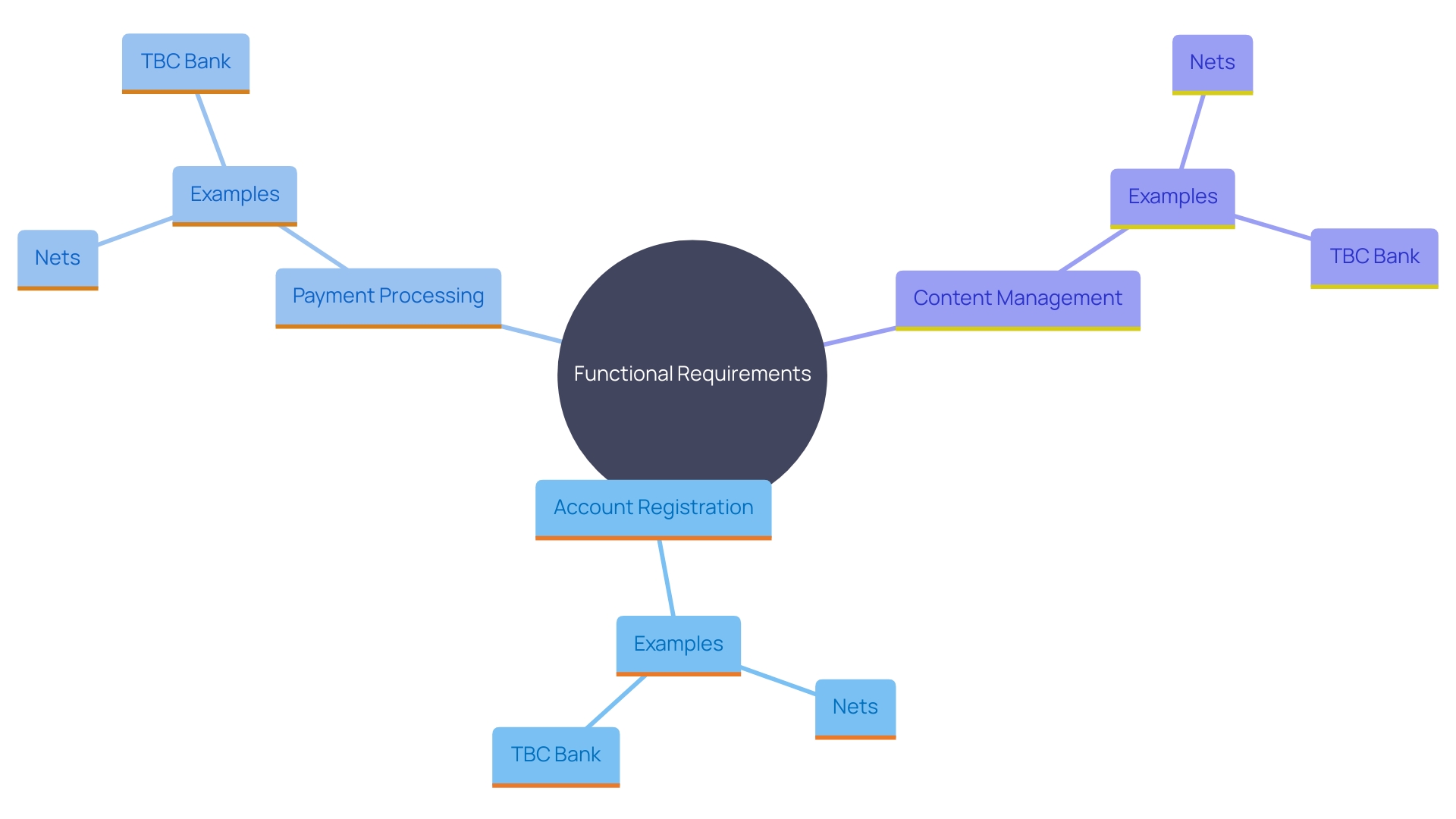
Types of Functional Requirements
'Functional specifications are essential in web development, ensuring that a system performs its intended tasks effectively.'. These requirements can be divided into several categories:
- Interface Requirements: These define how individuals interact with the website, including layout, design, and navigation. A well-designed interface enhances the experience, making it intuitive and engaging.
- Authentication Requirements: These detail the processes for individual login and access management. Secure authentication mechanisms protect user data and ensure only authorized access.
- Processing Requirements: These specify the tasks that must be performed, such as data processing, report generation, and transaction handling. Efficient processing needs guarantee that the setup functions seamlessly and effectively.
- Data Requirements: These outline the data storage needs, including database structures, data formats, and data retention policies. Effective data management is essential for preserving integrity and performance of the infrastructure.
Comprehending and executing these kinds of functional specifications are crucial for creating a strong and user-friendly online platform. Functional testing ought to be incorporated from the beginning of the project, as it evaluates the product’s functionality regardless of its internal structure, guaranteeing that the solution fulfills its defined criteria and provides a high-quality experience for those interacting with it.
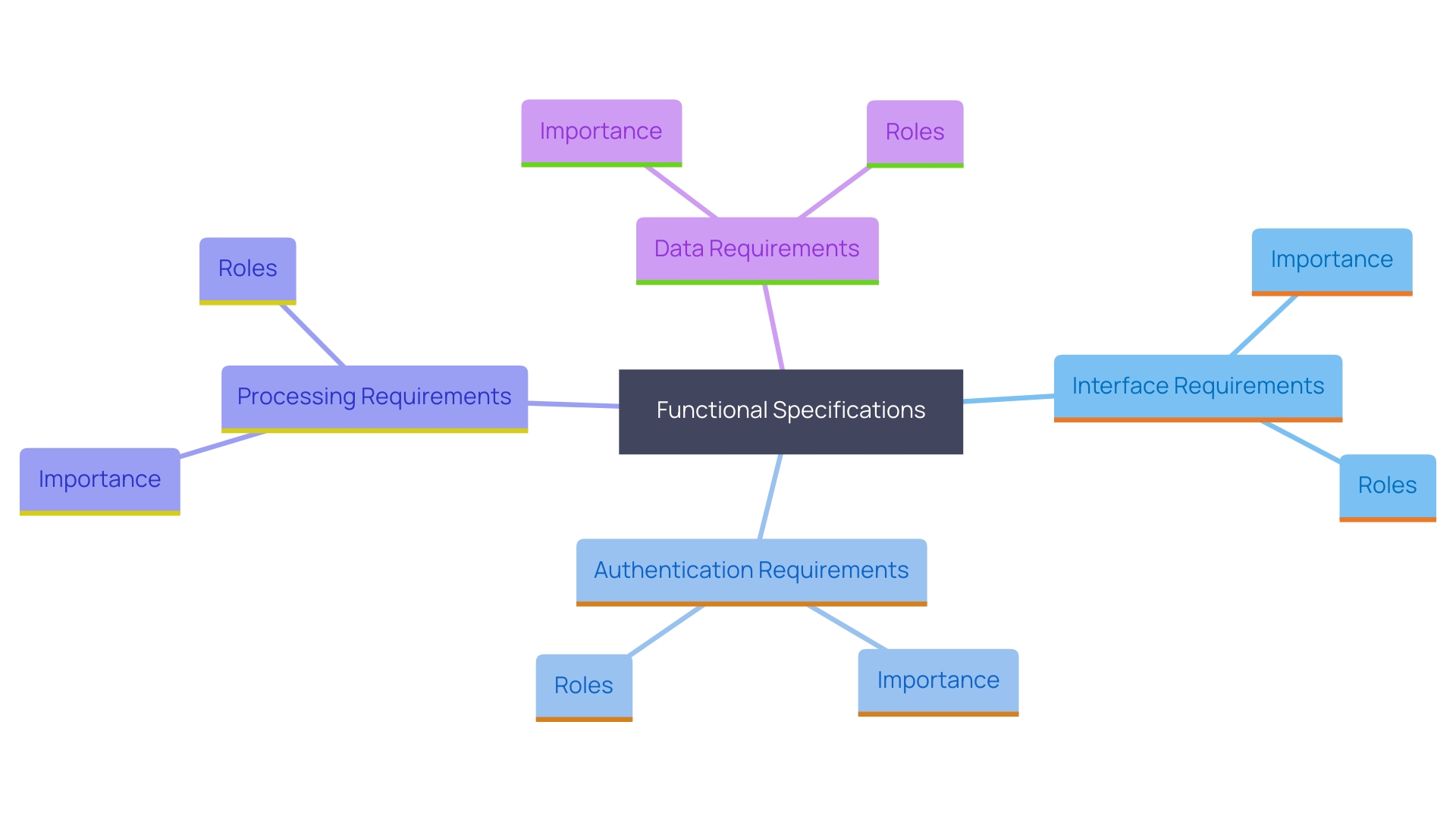
Key Functional Requirements for a Website
When developing a website, certain key functional requirements should be prioritized to ensure a seamless user experience and operational efficiency:
-
User Registration and Login: Personalized experiences are crucial in today's digital landscape. Establishing a robust registration and login system not only enhances engagement but also facilitates targeted marketing and data analysis. Research indicates that tailored experiences can greatly enhance retention and satisfaction.
-
Search Functionality: With over 1.09 billion online platforms on the Internet, efficient search functionality is indispensable. It allows individuals to find content swiftly and effortlessly, enhancing the overall experience. According to recent trends, search functionalities that incorporate AI and machine learning can further refine search results, making them more relevant and personalized.
-
Responsive Design: Ensuring that your online platform is usable across all devices is no longer optional. With the rise of mobile internet usage, a responsive design that adapts to different screen sizes and devices is essential. This not only enhances accessibility but also assists in preserving a consistent experience across platforms.
-
Payment Integration: For e-commerce sites, integrating secure and efficient payment gateways is fundamental. Companies like Nets have set high standards by offering tailored digital payment solutions that cater to global, regional, and local market needs. This integration can significantly impact the ease of transactions and customer trust.
-
A user-friendly Content Management System (CMS) is essential for maintaining and updating online content effortlessly. It enables individuals without technical expertise to handle the site's content, ensuring that the information remains pertinent and current. Federal platforms, for example, are progressively utilizing CMS solutions to meet accessibility and usability criteria, making certain that services are fairly accessible to everyone.
Every one of these components contributes significantly to developing a site that not only fulfills the practical needs but also improves visitor experience and operational effectiveness.
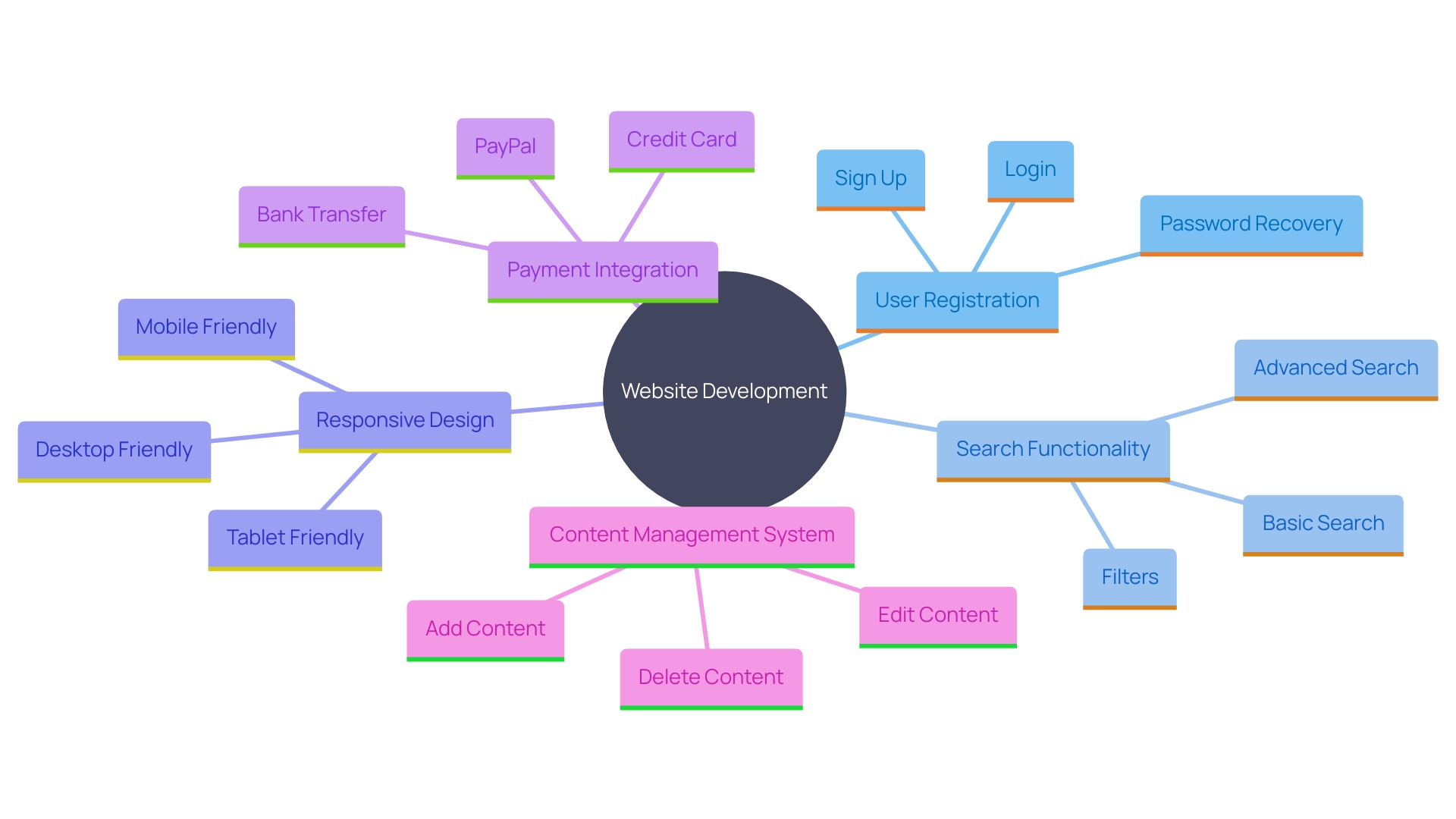
Creating a Website Requirements Document
A Website Requirements Document (WRD) is essential as it serves as the project's foundational blueprint. This document should clearly outline functional requirements, client stories, and acceptance criteria. 'For example, individual stories should follow a specific format: 'As a [type of individual], I want to [perform some action] so that [some reason or benefit].'' Furthermore, acceptance criteria guarantee that each feature operates as expected from an end-consumer perspective, aligning with their expectations.
Furthermore, it is essential to provide a comprehensive summary of the core framework, its primary functions, purpose, and the technology stack it utilizes. Identifying and categorizing different user groups, such as administrators, end-users, and external stakeholders, adds clarity. The WRD should also break down the core system into its subsystems or modules, describing the functionality of each and how they interact with each other and external systems.
The document must also outline the roles and responsibilities of stakeholders, timelines, and necessary resources. Involving stakeholders during the preparation process to confirm needs and assumptions is essential. This guarantees that all involved have a common comprehension of project objectives and can avert problems that stem from inadequately defined specifications, ultimately resulting in a more successful project outcome.
Distinguishing Functional and Non-Functional Requirements
Functional specifications outline the particular actions and capabilities that an application must execute, including data processing, calculations, and interactions with individuals. These are the foundational elements that directly address the needs and objectives of the business. For example, in the creation of a central framework for public records management, functional specifications might involve individual authentication, data input, and report production.
Conversely, non-technical specifications emphasize the quality characteristics of the setup, including performance, security, and scalability. These criteria guarantee the setup functions efficiently in different circumstances and satisfies user expectations. Performance testing, for instance, is crucial to assess the speed, stability, and scalability of the application, ensuring it can manage high volumes of requests and data without compromising performance.
The distinction between functional and non-functional specifications is crucial for the successful delivery of any project. While functional specifications address what the platform should do, non-functional criteria ensure the platform operates effectively in practical situations. In a project like Armor, a portfolio website for the film industry, functional specifications would include features like video playback and portfolio management, whereas non-functional criteria would ensure the site loads swiftly, is secure, and can manage high traffic volumes.
To illustrate, consider the microservices and Apache Kafka implementation by Contentsquare for notification delivery. This configuration not only meets the practical need for timely alerts but also caters to non-functional criteria by ensuring the infrastructure is scalable and dependable under peak loads. Such a balanced approach to both types of needs leads to the development of robust and user-friendly systems.
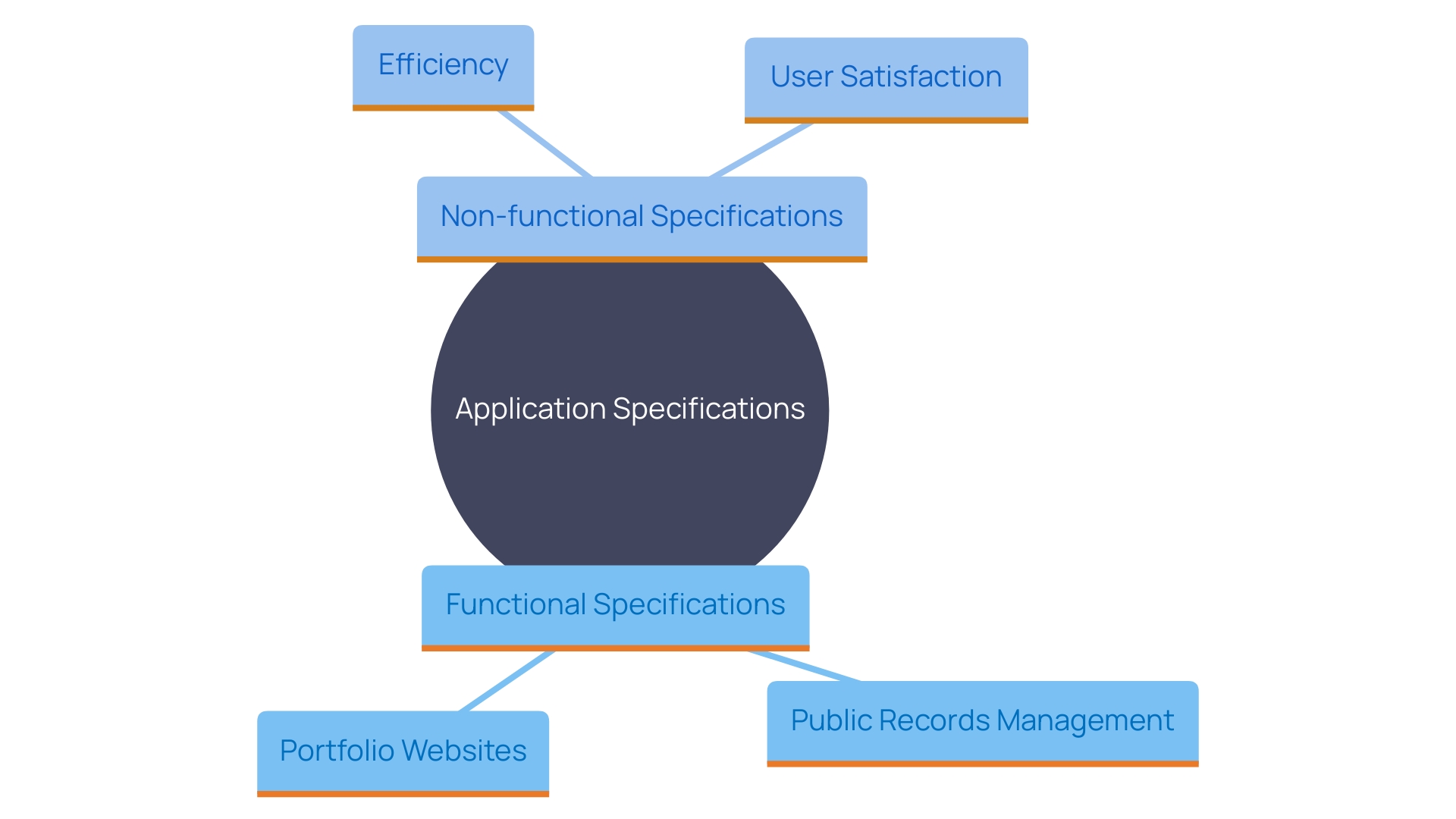
Best Practices for Writing Functional Requirements
To ensure clarity and effectiveness, adhere to these best practices when writing functional requirements:
-
Be Specific: Clear definition is key. Ambiguity can lead to misinterpretation and errors during development. Each specification should be unambiguous, testable, and measurable. This ensures that the end product meets the necessary standards and can be validated against the initial objectives.
-
Use Clear Language: Avoid industry jargon and complex terminology. The objective is to ensure that all stakeholders, regardless of their technical expertise, comprehend the needs. This promotes better communication and collaboration among team members, reducing the risk of misunderstandings.
-
Prioritize Requirements: Identify which functionalities are most critical to the website's success. Prioritization helps in allocating resources effectively and ensuring that the most important features are developed first. It also assists in managing stakeholder expectations by highlighting what will be delivered and when.
-
Review and Revise: Regularly update specifications based on stakeholder feedback and changing needs. This iterative process ensures that the requirements stay relevant and aligned with the project goals. Continuous review helps in identifying any gaps early on, which can then be addressed promptly, minimizing the risk of costly rework later in the development cycle.
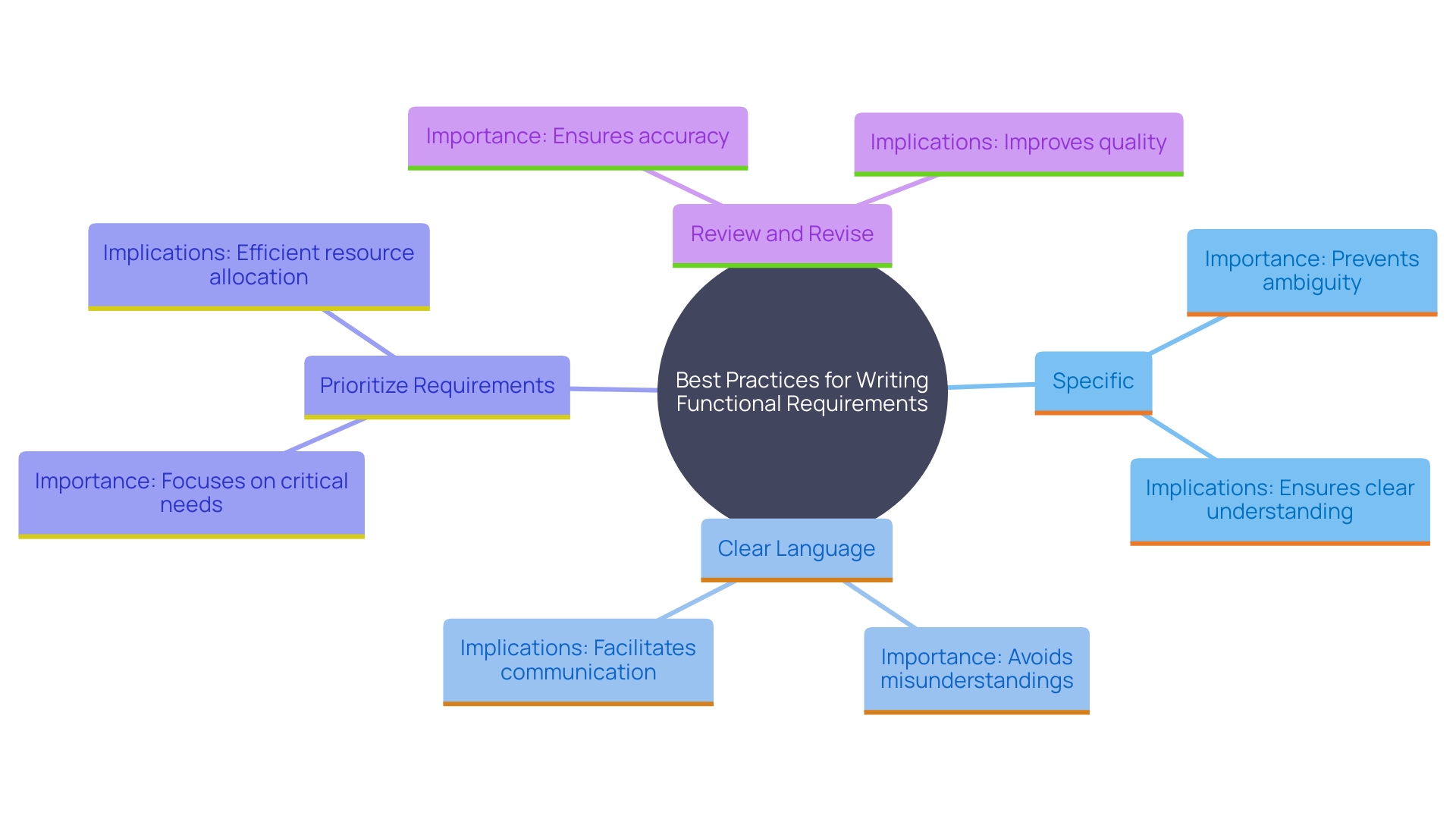
Conclusion
Functional requirements are essential for the successful development of any system or website, forming the foundation upon which user needs are met. They encompass a range of capabilities, from user interactions and authentication to data management and processing. Highlighted through the examples of Nets and TBC Bank, the importance of clearly defined functional requirements cannot be overstated, as they facilitate seamless user experiences and operational efficiency.
Understanding the various types of functional requirements, including user interface, authentication, processing, and data requirements, is crucial for creating effective and user-friendly websites. Prioritizing key functional elements such as user registration, search functionality, responsive design, payment integration, and content management ensures that the system not only meets its intended purpose but also enhances user satisfaction.
The creation of a comprehensive Website Requirements Document is vital for aligning stakeholder expectations and guiding project development. This document should clearly outline functional requirements, user stories, and acceptance criteria while categorizing user groups and detailing roles and responsibilities. Distinguishing between functional and non-functional requirements further strengthens project delivery, ensuring that both the functionality and quality attributes of the system are addressed.
Adhering to best practices in writing functional requirements—such as being specific, using clear language, prioritizing critical functionalities, and regularly reviewing and revising requirements—will lead to more effective communication and collaboration among stakeholders. This approach not only minimizes misunderstandings but also fosters the development of robust, user-friendly systems that meet market demands and user expectations.





